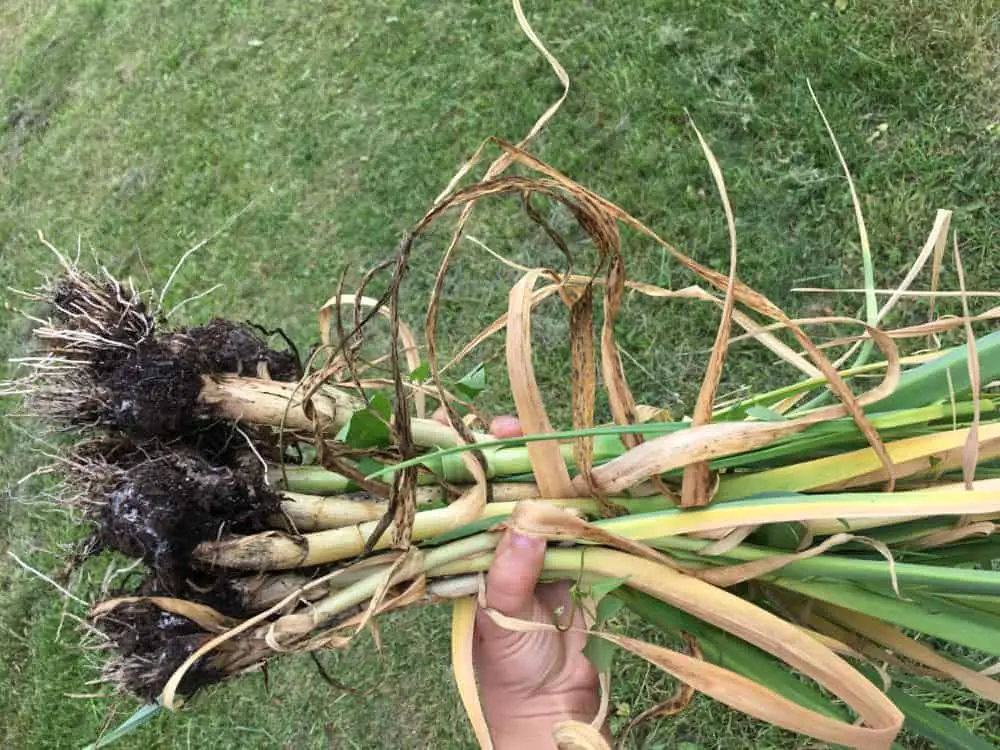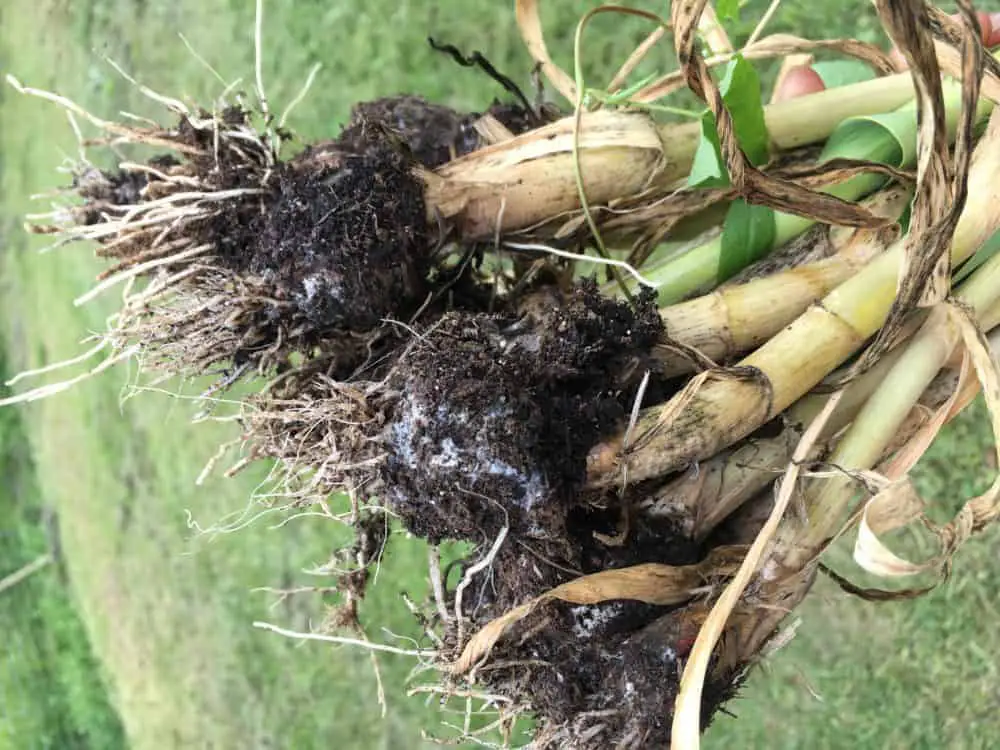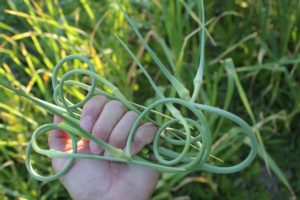Garlic plant disease and Allium white rot are terrible to go through
Garlic is a crop that takes many months of the year to grow. Having a whole bed of garlic become lost to garlic disease is terrible.
Growing garlic is one of my favorite crops to grow. Our family loves to eat garlic in many ways: by harvesting spring garlic shoots, harvesting the garlic scapes, and finally, harvesting garlic bulbs.
There are some big warning signs of garlic plant disease and you need to act fast.
Garlic Diseases and Garlic White Rot
Most garlic disease and problems tend to be in the bulb. There are many fungal problems that cause garlic disease, one of them being white rot. There are many ‘above the ground’ signs of garlic disease which are important to pay attention to.

Signs of Garlic Diseases
It’s honestly heartbreaking after waiting months of winter and watching your garlic grow to find out that it’s now diseased. Often diseased garlic isn’t noticeable early in the spring. Our garlic this spring looked super healthy, grew fast and happily for a couple months. I added extra minerals. Azomite and compost to help build up the health of the garden bed. We did get a late cold snap which caused plant stress, but because plant disease is fungal it’s in the soil or from an infected batch before planting. I grew garlic well for 6 years, and in the past 2 years I’ve had garlic white rot. Apparently white rot can stay in the soil for 10 years!
The first sign of garlic disease are stunted plants.
The tops of the garlic will stop producing leaves and can have striped yellow leaves.

The plant is basically not growing ‘normally’.

Another sign of garlic disease is if you pull up the plants and see white stuff on the roots and a weird looking garlic bulb.

Garlic Disease Tips
This is really important, if you leave the infected garlic in the garden bed the spores will spread and increase the chance of the entire bed being infected. Pull up any plants that have any fungal problems or disease.
- If your garlic is stunted pull them up right away.
- Watch for striping leaves or strange looking leaves not growing properly.
- If your garlic leaves are yellowing prematurely, pull up a bulb and inspect one. Leaves will go yellow towards the last couple of weeks as a sign the garlic is ready to be harvested. Diseased garlic however will all be yellow, you actually want some green leaves when harvesting garlic. Learn more about getting the timing right for harvesting garlic here.
- If ant of your garlic has fuzzy white spores or black pull them up immediately to reduce the bed contamination.
DO NOT COMPOST GARLIC WITH DISEASE!!
This is super important, the spores also affect other alliums and will infect the compost and the rest of your garden. You want to burn the diseased garlic, or take it to the trash if that isn’t an option for you.
If your whole bed isn’t looking good, it’s better to pull up those plants and sow something new. DO NOT PLANT ALLIUMS IN THE SAME BED FOR 4 YEARS. That’s onions, leeks, garlic, etc.
Picture of Garlic Disease

If you have healthy cloves when planting garlic and your bed gets infected with white rot, it’s likely in the soil already.
Garlic Disease Preventative Measures
When growing garlic, it’s important to inspect the garlic bulbs before planting them. Often they can show signs of fungal disease from the previous season.
- Don’t over water your garlic. Often cold wet springs will increase fungal activity.
- Remove the mulch back from the spring. Too much moisture retention increases fungal problems.
- Be sure the bed has good soil for healthy growth.
- Make sure the soil drainage is good. Too much water retention is bad for garlic. We have clay soil in our garden and it’s much harder to grow garlic since we moved.
- If you have disease do not plant alliums in that bed for at least 4 years.
- There are fungicides but as an organic gardener I don’t choose that route. We plan on building raised beds and introducing new soil and triple checking the garlic bulb source before planting. Some people use a bleach solution before planting but there’s also a risk it will kill the clove and they won’t sprout.
Have you dealt with garlic disease or white rot before?








Hi Folks, powdered Sulfur be used as a fungicide when planting Garlic.
This article mentions White Rot, but says to wait 4 years before planting Alliums. White Rot lives in the soil for 20 to 30 years though.
You need to plant elsewhere and and be very careful of cross-contamination.